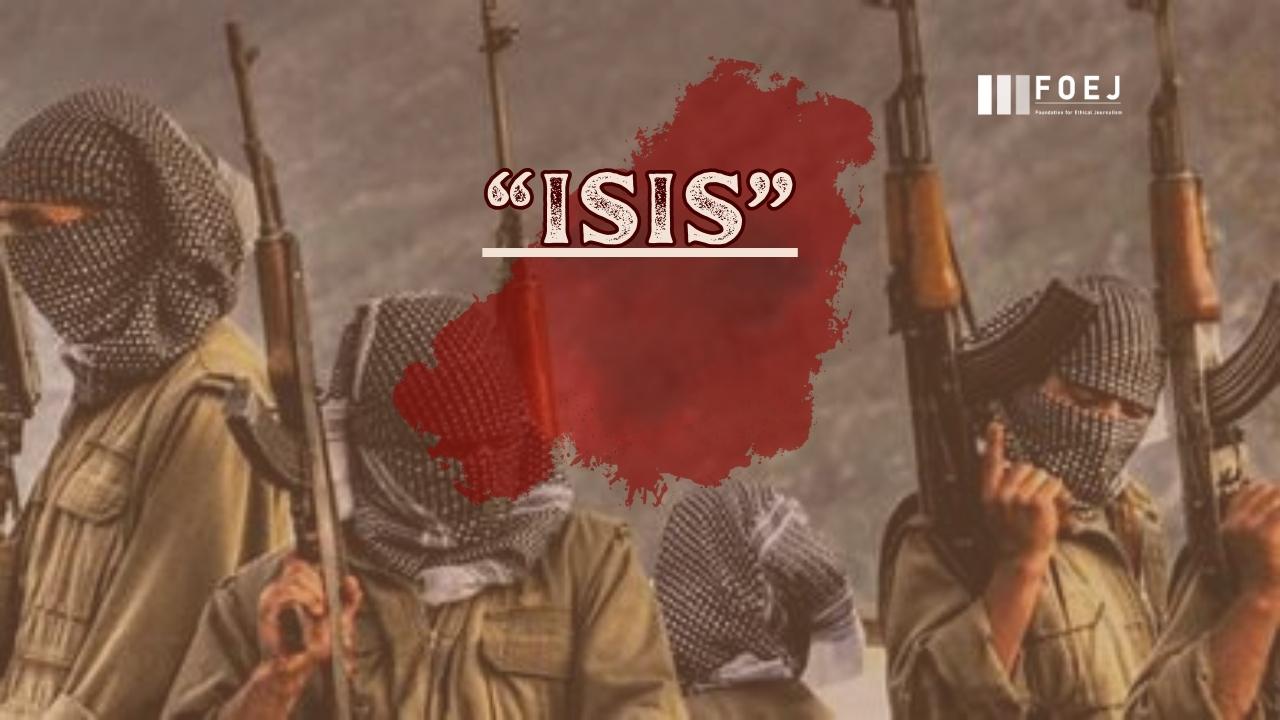In a chilling reminder of the enduring threat posed by terrorism, Moscow’s Crocus City Hall became the scene of one of Russia’s deadliest attacks in two decades on March 22, 2024. The assault, which claimed the lives of 144 individuals and left over 100 wounded, sent shockwaves through the nation. Authorities swiftly moved to apprehend a total of 11 suspects, including four directly linked to the heinous act.
This harrowing event drew stark parallels to another dark chapter in history: the coordinated terrorist attacks that shook France on November 13, 2015. On that fateful day, 130 innocent lives were lost, with more than 350 sustaining injuries in the onslaught.
Both atrocities bear the sinister hallmark of a ruthless terrorist organization whose reign of terror has spanned almost a decade. Since its inception in 2014, this group has unleashed violence across the globe, with a particular focus on the Middle East. Russia, Iran, Lebanon, and Syria have all found themselves in the crosshairs of this malevolent entity, alongside other nations perceived as adversaries to the interests of the United States and Israel.
The sheer scale and brutality of these attacks have ignited widespread alarm and condemnation. From barbaric acts such as burning captives alive to the grotesque spectacle of live executions broadcast for the world to witness, the group’s methods have plumbed the depths of depravity
The Origin of Terror
One needs to look at Al-Qaeda’’s history to fully understand ISIS. Al-Qaeda’s roots intertwine with the tumultuous history of Afghanistan, where the Soviet invasion in 1979 triggered shockwaves across the Muslim world. This aggression spurred a wave of solidarity as approximately 20,000 foreign fighters rallied to aid Afghan resistance efforts against the Soviet forces. Among these volunteers was Osama bin Laden, who forged crucial connections with fellow radicals, laying the groundwork for what would become the al-Qaeda network. In 1998 as the Soviets were defeated and prepared to withdraw from Afghanistan, the Taliban gained autonomy to rule the country.
Abu Musab al-Zarqawi, initially known as Ahmad Fadhil Nazzal al-Khalaylah, emerged onto the global stage with profound significance. Years after joining forces with Osama bin Laden and other radicals, al-Khalaylah assumed the moniker Abu Musab al-Zarqawi. This transformation marked the genesis of the group that would later evolve into what we now recognize as ISIS.
According to Aaron Zelin, a scholar at the Washington Institute for Near East Policy, the encounter between Abu Musab al-Zarqawi and Osama bin Laden in Afghanistan in 1999 was fraught with tension due to Zarqawi’s criminal background and his radical interpretation of takfir, the act of declaring another Muslim as an apostate, thus legitimizing their killing. This ideological discord sowed seeds of distrust between the two figures, setting the stage for divergent paths in their respective pursuits of jihadist goals.
Amidst the chaos and a visible power vacuum , Abu Musad Al-Zarqawi declared himself the head of Al-Qaeda in Iraq and formed Al-Qaeda in Iraq (AQI) in 2004. Al-Zarqawi was killed in a US airstrike in 2006, and by 2007, the group faded into obscurity until Al-Qaeda Iraq rose again in 2011 with terrorist operations in eastern Syria. In 2013, the group was renamed ISIS, and in 2014, Al-Qaeda officially cut its ties with the group for its extremism and cruelty against the muslims.
ISIS terror attack on Muslim Nations
- 2013: In Iraq, over 1000 people were killed in a series of attacks.
- June 2014: In Iraq, on June 12, 2014, ISIL carried out a devastating assault on Camp Speicher in Tikrit, resulting in the merciless slaughter of over 1,566 Shia Iraqi Air Force cadets. The attack, perpetrated against unarmed cadets, unfolded while the camp hosted between 4,000 to 11,000 individuals. Regrettably, this atrocity stands as the second deadliest terrorist attack in recorded history and remains the deadliest act attributed to ISIL.
- March 2015: In Yemen, 142 people were killed and more than 350 were injured in a suicide bombing attack in a mosque in Sana’a.
- May 2015: In Saudi Arabia, 26 people were killed and more than 106 injured in an attack on the “Imam Ali ibn Abi Talib Mosque.”
- May 2015: In Iraq, ISIS fighters took control of Ramadi, the largest city in western Iraq, holding it until December 2015.
- June 2015: In Kuwait City, 27 people were killed and more than 227 injured in an attack on a mosque.
- June 2015: In Syria, 145 people were killed in an attack.
- July 2015: In Iraq, 130 people were killed and more than 100 injured in a car bombing.
- July 2015: In Turkey, 33 people were killed and 104 injured in a suicide bombing targeting the youth wing of the Socialist Party of the Oppressed.
- October 2014: In Egypt, 224 people were killed as a flight en route from Egypt to Saint Petersburg was bombed.
- January 2016: In Libya, 60 people were killed and more than 200 injured in a suicide truck bombing at a police training camp.
- February 2016: In Syria, 57 people were killed and more than 100 injured in a car bombing.
- February 2016: In Syria, 83 people were killed and 178 injured in a car bombing and two suicide bombings targeting the Sayyidah Zaynab Mosque, believed to contain the grave of Prophet Muhammad’s granddaughter.
- July 2016: In Iraq, 325 people were killed and more than 225 injured in bomb attacks in Baghdad.
- May 2017: In the Philippines, 1200 people were killed and more than 1400 injured in the battle for the city of Marawi.
- July 2018: In Pakistan, 31 people were killed and 40 injured in a suicide bombing in Quetta.
- April 2019: In Pakistan, 22 people were killed and 48 injured in a bombing in Quetta.
- January 2020: In Niger, 166 people were killed in the battle of Chunagodrar.
- July 2021: In Baghdad, Iraq, on the eve of Eid al-Adha, 35 people were killed and more than 60 injured in a suicide bombing attack carried out at a market place.
- January 2022: In Syria, Ghuwaryan prison (a.k.a. PRISF Hasakah) was under attack by ISIS, killing more than 100 prison guards and 400 ISIS detainees.
- April 2024: In Syria’s desert, ISIS attacked Palestinian fighters, resulting in the death of 20 Palestinian fighters.
Concerns voiced by Islamic Leaders
The terror attacks by the radical ISIS have caused widespread hatred among Muslim leaders, and time and again we have witnessed the condemnation of Muslim leaders against the extremist ideology and their brutal tactics that ISIS is known for.
In 2014, while speaking on the eighth anniversary of the conclusion of Hezbollah’s one-month war with Israel, Hezbollah leader Nasrallah warned of the growing threat posed by the radical Islamist movement, labeling it a “monster”. He also emphasized on its potential to endanger Jordan, Saudi Arabia, Kuwait, and other Gulf states. Nasrallah also focused on the existential danger it presents to Lebanon, vowing readiness to fight it if necessary.
He said, “This danger does not recognize Shi’ites, Sunnis, Muslims, Christians or Druze or Yazidis or Arabs or Kurds. This monster is growing and getting bigger.
“[ISIS]does not have borders. There is a real danger and a real fear among many states and authorities, because one of the advantages of this organization is its capacity to recruit among followers of al Qaeda-Wahhabi thought, ” he added further.
National Review, in July 2014 reported that Taliban in Afghanistan warned ISIS terrorists fighting in Iraq to ‘avoid extremism’. He said, “Muslims also should avoid extremism in religion, and judging others without evidence, and distrusting one another.”
Never-Ending Catastrophe: An example of Golan Heights
With change in name but indistinguishable activities, ISIS began a huge offensive in northern Syria by mid-September 2014, an attempt to gain control of the Kurdish areas on the Syria-Turkey border. The fighting lasted for several months, and eventually, tens of thousands of refugees fled into Turkey. Soon, ISIS started carrying out several attacks in Turkey, resulting in many casualties and losses.
Since 2011, the year marked by the rise of the civil war in Syria, ISIS has been vicariously attacking Syria. Amidst the conflict and chaos, Israel hasn’t held back from taking advantage of the war and has been attacking Syria since the same year. However, Israeli actions against Syria trace back to 1967, when Israel occupied Syria’s Golan Heights, expelling almost 130,000 Syrians from their 200 villages. Before international law, 22,000 Syrians belonging to the Druze minority remain illegally displaced.
Connecting the Dots, What Remains Veiled?
Currently, the Yarmouk Valley in the Golan Heights is under ISIS control, and Israel prefers not to take any initiative to remove ISIS from the region, despite frequently boasting about attacking ISIS. Similarly, ISIS who presents itself as an ally to muslims and had promised to destroy Israel from the base carried out no offensives against it. On the contrary, it keeps frequently attacking Israel’s enemies Iran, Lebanon’s Hezbollah, and Syria and Golan Valley becomes the launching ground of those offenses against Syria and Lebanon.
In June 2016, a news agency reported, “In a speech at the Herzliya Conference, Israel’s military intelligence chief, Major General Herzi Halevy, took Israel’s long-standing position that it “prefers ISIS” over the Syrian government to a whole ‘nother level, declaring openly that Israel does not want to see ISIS defeated in the war.” The statement gives a glimpse of what lies behind the military operations, and their policies.
For decades, various American investors attempted to discover oil in the Golan Heights, generally unsuccessfully. Oil exploration began in 1970 and increased dramatically during the 1980s. However, it wasn’t until January 1990 that the Israeli government formally confirmed its approval for oil drilling in the occupied territories.
In the same year, the Israeli government granted the Israel National Oil Company permission to explore for oil in the Golan Heights. During this time, the Firil Center for Studies revealed that a significant $25 million had been invested in oil exploration in the Syrian territory under occupation, with major investors including Rupert Murdoch, Dick Cheney, and Jacob Rothschild.
Creator Turned Companion?
In 2019, the US, under the Trump administration, recognized Israeli sovereignty over the Golan Heights, thus proving itself as a true ally of Israel. While the emergence of the terrorist group goes back to the Soviet war in Afghanistan, Donald Trump didn’t shy away from announcing ISIS as a creation of Obama and Hillary Clinton on August 11, 2016, albeit later stepping back from his remarks, claiming them to be satire. Nonetheless, a day before the announcement, he presented similar thoughts on Hugh Hewitt’s radio show, stating, “He was the founder. The way he got out of Iraq… that was the founding of ISIS, OK?” referring to the withdrawal of US troops from Iraq in 2011, leaving power in the hands of ISIS.
The US has been accused several times in the past of supplying arms to extremist groups. In 2017, CNN reported that ISIS weapons included weaponry bought by the US military, which ended up in the hands of ISIS fighters within two months. The Syrian opposition group called Jaysh al-Nasr posted a series of photographs on December 21, 2016, showing fighters posing in a snowy landscape. Upon closer inspection, one of their anti-tank weapons bore an identical lot number and a similar serial number to the item seized in Iraq.
The rising atrocities against the people of Gaza and the surge of conflict in the Middle East draw attention to the connection between ISIS, Israel, and the US, Israel’s major ally.
On May 30, 2023, the Russian intelligence chief claimed that the US is training ISIS fighters at its own base to destabilize Syria, as reported by TASS, a Russian news agency. According to Sergey Naryshki, the intelligence chief, “this criminal activity is being directed from the American military base at Al-Tanf, near Syria’s borders with Jordan and Iraq. Dozens of ISIS (former name of IS-TTASS) fighters are being trained there, and their ranks are regularly replenished by the Americans, who release terrorists from prisons in the occupied northeastern part of Syria. Small arms, ammunition, and anti-tank missile systems are being delivered by truck to the training camps.” Naryshkin pointed out that the US doesn’t want stability in Syria and thus carried out a real-time attack in the troubled southern Syrian provinces of As-Suwayda and Deraa via Washington-controlled militants and fighters.
In 2017, CNN reported that ISIS weapons included weaponry bought by the US military that ended up in the hands of ISIS fighters within two months. The Syrian opposition group called Jaysh al-Nasr posted a series of photographs on December 21, 2016, showing fighters posing in a snowy landscape. A closer inspection shows that one of their anti-tank weapons bears an identical lot number and a similar serial number to the item seized in Iraq.
Healing Many Wounds, West’s Constant Aid For ISIS
In March 2015, The Wall Street Journal reported that the Israel-Syria borders had become a relief center to provide medical treatment to the Nusra Front and al-Qaeda fighters wounded in the civil war. Initially, Israel denied any contact with ISIS but later claimed that the contact was for humanitarian reasons.
In another incident on October 17, 2017, Syria’s state-run SANA news reported that troops found a variety of arms, ammunition, and telecommunication devices, including “an Israeli-made artillery piece, 800 mortar shells, a machine gun with 10,000 bullets, in addition to an amount of bullets of 17 mm., 14,5 mm., and 30 mm. machine guns and an RPG [rocket-propelled grenade], three RPG launchers, and a number of telecommunication devices.”
In an April 2017 Venezuelan television interview, after Israeli attacks on Damascus, Syrian President Bashar al-Assad stated that the IDF attack on the Syrian Army showed Israel was “supporting terrorists’ in Syria.
Kit Klarenberg in his article “How CIA and MI6 Created ISIS” wrote, “So it was that the CIA and MI6 began supporting Sunni “nationalist jihadists” throughout West Asia. The next year, Bashar Assad rejected a Qatari proposal to route Doha’s vast gas reserves directly to Europe, via a $10 billion, 1,500 kilometer-long pipeline spanning Saudi Arabia, Jordan, Syria and Turkey. As extensively documented in WikiLeaks-released diplomatic cables, US, Israeli and Saudi intelligence immediately decided to overthrow Assad by fomenting a local Sunni rebellion, and started financing opposition groups for the purpose.”
RAND, one of the largest think-tanks supported by the Pentagon, proposed a “divide and rule” to strategize the power of the US in the Middle East. They suggested for the withdrawal of US troops to create a power vacuum, while Washington could exploit “fault lines between [Iraq’s] various Salafi-jihadist groups to turn them against each other and dissipate their energy on internal conflicts,” while also “supporting authoritative Sunni governments against a continuingly hostile Iran”.
Beyond military operations and global politics, the connection between Israel, the US, and ISIS may remain veiled to a larger audience, but while connecting the scattered dots properly, it becomes evident that ISIS is the creation of the West. No matter how many words of peace the West spits out, it’s responsible for the mass devastation of tranquility and stability in the Middle East. With the ongoing crisis that has hit the Muslim nations in years of brutal global politics, a rising tide is fitting all boats.









